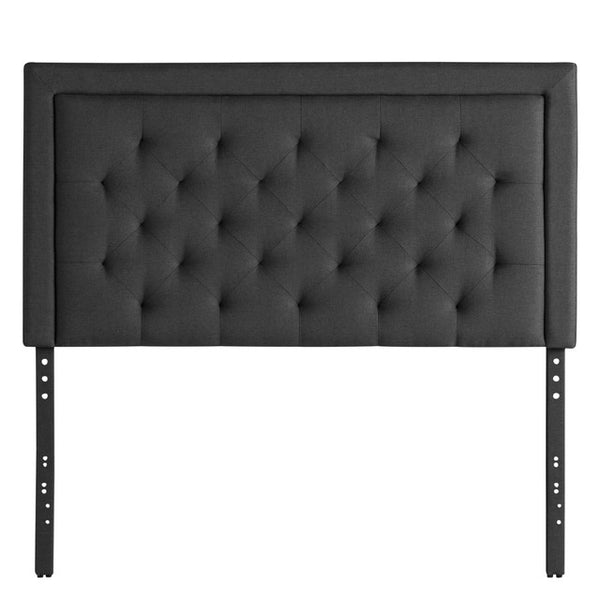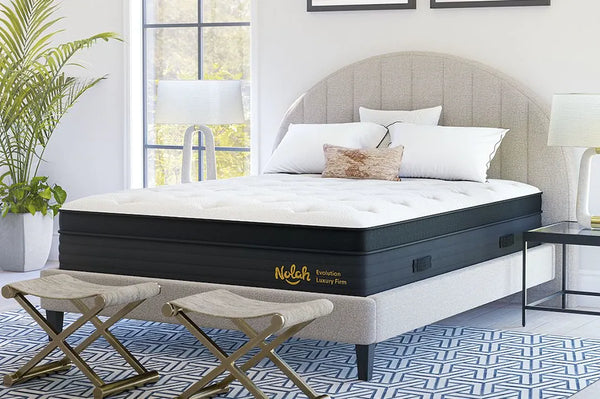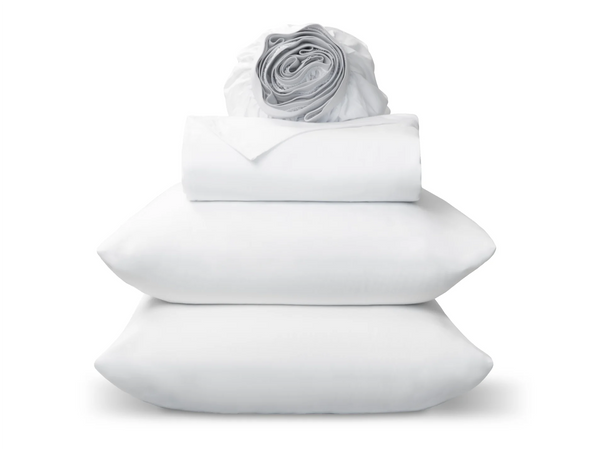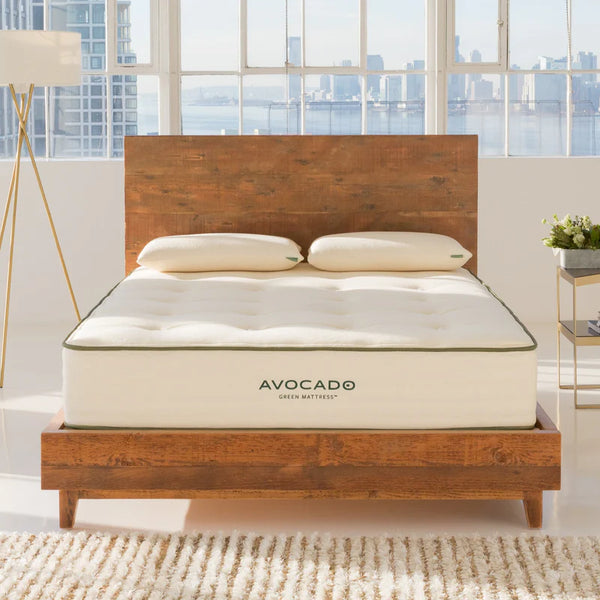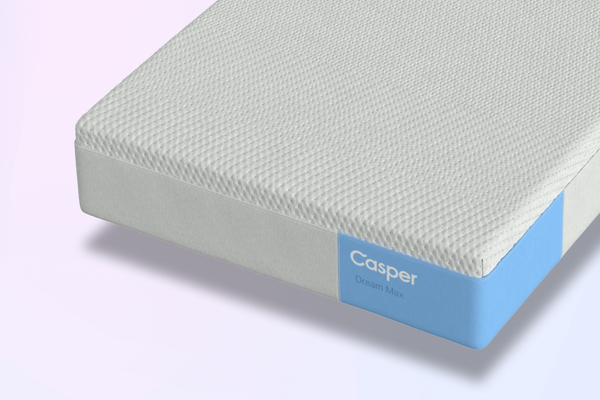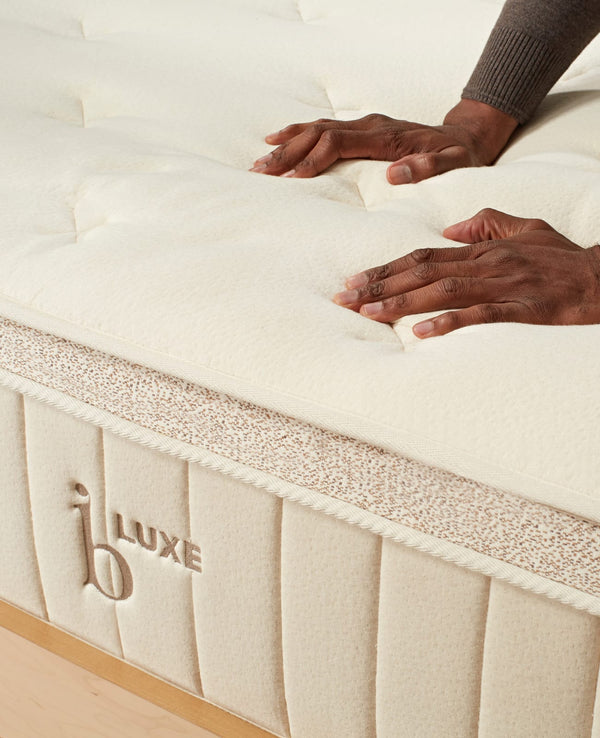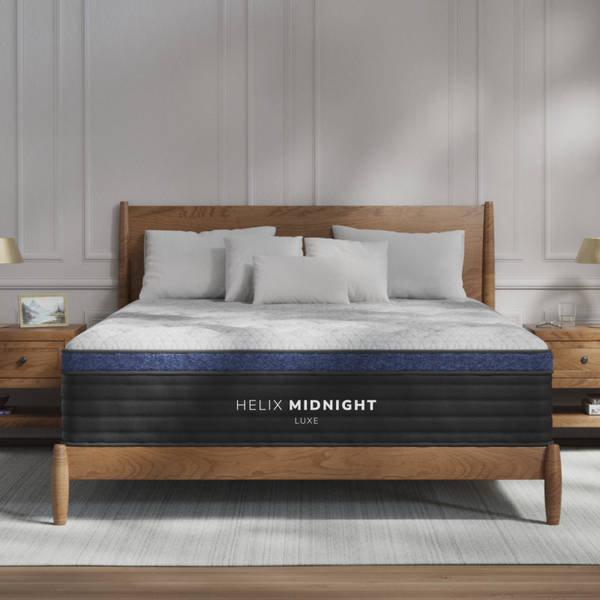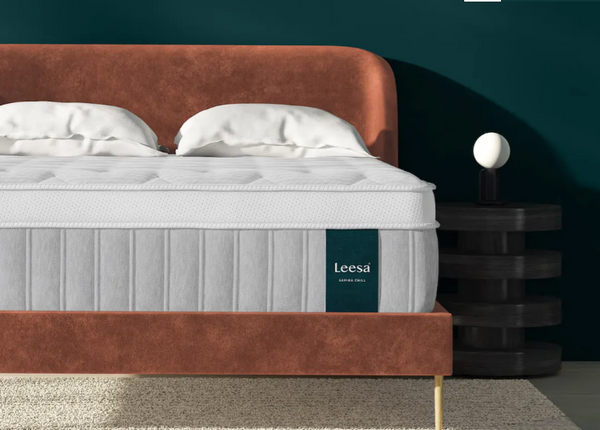I've been helping people find the right mattress for years at The Sleep Loft, and one question keeps coming up: "What exactly is a hybrid mattress?" It's a fair question, especially since the term gets thrown around a lot.
A hybrid mattress combines the best of both worlds by layering foam comfort materials on top of a supportive innerspring coil system. Think of it as a marriage between the contouring feel of memory foam and the bounce and breathability of a traditional spring mattress.
The hybrid mattress market has exploded in recent years, and for good reason. According to market research, the global hybrid mattress industry is projected to grow at 12.30% annually through 2030, reaching USD 5.77 billion. That's a lot of people choosing hybrids over traditional foam or spring mattresses.
Key Takeaway
- Hybrid mattresses combine at least 2 inches of foam comfort layers with an innerspring coil support system
- They score an average of 8.61 in overall performance, outperforming the average mattress score of 8.57
- Hybrids excel at temperature regulation, with cooling scores of 8.7 compared to 8.2 for all-foam mattresses
- Edge support on hybrids averages 8.7 out of 10, significantly better than all-foam alternatives
- These mattresses typically last 7 to 10 years with proper care
- They work well for all sleep positions and most body types
- The hybrid segment is growing faster than any other mattress category at 9.3% CAGR
Understanding Hybrid Mattress Construction
Let me break down what you're actually getting when you buy a hybrid mattress. The construction is more detailed than it might seem at first glance.
The Basic Definition
A hybrid mattress isn't just any mattress with springs and foam. To be considered a true hybrid, it needs at least 2 inches of substantial foam comfort layers paired with a coil-based support system. This standard ensures you're getting meaningful benefits from both technologies, not just a traditional innerspring with a thin foam topper.
At our showroom, I've seen manufacturers slap the "hybrid" label on mattresses with barely any foam at all. That's why understanding the construction matters when you're shopping.
The Layer Breakdown
Starting from the top, you'll typically find a cover that might include cooling fabrics or moisture-wicking materials. Some premium models use special materials that respond to your body temperature.
Right below that sits the comfort system. This usually includes memory foam, latex, polyfoam, or gel-infused variations. These materials are specifically chosen because they contour to your body's natural curves and relieve pressure at your hips and shoulders.
Here's where it gets interesting. Between the comfort layers and the coil system, most quality hybrids include transition layers. These prevent you from sinking too far into the mattress while maintaining that pressure relief you want. Think of them as the bridge between the soft comfort layers and the firm support core.
The support core features pocketed coils, where each spring is individually wrapped in fabric or foam. This is a huge upgrade from old-school connected springs because each coil can respond independently to pressure. Some advanced designs even use different coil gauges in different zones to provide targeted support for different body regions.
Material Innovations
The hybrid category has seen some cool material innovations lately. Copper-infused memory foam has become popular in premium models because copper naturally conducts heat away from your body. This addresses one of the biggest complaints people have about traditional memory foam.
Some materials actually absorb excess heat when your body temperature rises and release it when you cool down. It's like having a built-in thermostat in your mattress.
Edge support has also gotten a lot of attention. Premium hybrids now use reinforced perimeter coils or high-density foam edge rails to prevent that sinking feeling when you sit on the edge of the bed or sleep near the side.
How Hybrid Mattresses Actually Work
The magic of hybrid mattresses comes from how the different layers work together to support your body.
Support and Pressure Relief
The foam layers conform to your body contours, which reduces pressure concentration at contact points like your shoulders and hips. Meanwhile, the coil system provides consistent support across the entire sleep surface.
Independent testing shows that hybrid mattresses achieve better pressure distribution than traditional innerspring mattresses while maintaining superior spinal alignment compared to all-foam alternatives. The pressure readings at common pressure points are noticeably lower on hybrids.
Advanced hybrid designs take this further with zoned support. By using different coil gauges or foam densities in specific areas, these mattresses provide firmer support where you need it (like under your hips) while offering gentler conforming for lighter areas (like your shoulders). This targeted approach optimizes spinal alignment during sleep.
Temperature Control
One of the biggest advantages of hybrid construction is temperature regulation. The coil support system creates natural air channels throughout the mattress, letting heat escape continuously. This addresses a major complaint about all-foam mattresses, which tend to trap heat due to their dense construction.
Testing data shows hybrid mattresses maintain temperatures 2 to 4 degrees lower than comparable all-foam models throughout an eight-hour sleep period. That might not sound like much, but it makes a real difference when you're trying to stay comfortable all night.
Premium models combine multiple cooling technologies. You might get gel-infused foam layers for immediate cooling contact, while the coil system enables ongoing heat escape. Some even add copper-infused memory foam, which draws heat away from your body and distributes it throughout the mattress.
Motion Isolation
If you sleep with a partner, motion isolation matters. Hybrid mattresses use individually pocketed coils that compress independently, so movement in one area doesn't transfer across the entire sleep surface.
Testing shows hybrids have significantly lower motion transfer than traditional innerspring mattresses while maintaining better responsiveness than dense memory foam. This balance is particularly valuable for couples with different sleep schedules or movement patterns.
The foam comfort layers add another level of motion dampening. Memory foam layers excel at this because they convert kinetic energy from movement into heat energy, absorbing motion rather than transmitting it.
The Real Benefits of Choosing a Hybrid
Let me walk you through the practical advantages you'll actually notice with a hybrid mattress.
Superior Edge Support
Edge support is where hybrids really shine. Testing data shows average edge support scores of 8.7 for hybrids compared to 8.6 overall. This stems directly from the coil-based support system, which maintains structural integrity across the entire mattress surface.
Based on our experience at The Sleep Loft, hybrid mattresses show minimal compression when weight is applied to edge areas – less than 4 inches of sinkage compared to over 4 inches for many all-foam alternatives.
This translates to real benefits. You can use the full mattress surface without feeling like you're going to roll off. If you need stable support for getting in and out of bed, hybrids deliver. For couples, this means more usable sleep space.
Works for Everyone
Hybrid mattresses accommodate different sleep positions and body types better than most single-material mattresses. Testing reveals that hybrids receive favorable ratings from side sleepers, back sleepers, and combination sleepers across various weight categories.
Side sleepers benefit from the contouring properties of foam comfort layers that reduce pressure at the hips and shoulders while the coil system maintains spinal alignment. Back sleepers experience optimal support from the responsive coil core that prevents excessive sinkage. Stomach sleepers get the firmer support they need to prevent lower back strain while still receiving surface comfort from foam layers.
The weight distribution capabilities are impressive too. Hybrids effectively support sleepers from lighter individuals who might sink too deeply into soft foam mattresses to heavier sleepers who require substantial structural support.
Built to Last
Quality hybrid mattresses typically last 7 to 10 years with proper care. This longevity comes from the structural integrity provided by the coil support system, which resists sagging better than foam-only alternatives.
Professional durability testing involving 30,000 compression cycles shows that quality hybrid mattresses maintain their support and comfort characteristics well beyond the timeframe that would cause significant wear in all-foam models.
The coil system's resistance to permanent deformation is key here. Unlike foam materials that can develop body impressions over time, properly constructed coil systems maintain their original shape throughout their lifespan.
Material quality matters significantly. Premium models with high-grade steel coils and dense foam layers demonstrate superior durability compared to budget alternatives using lower-quality materials.
Enhanced Cooling
Temperature regulation ranks among the top three factors influencing mattress purchasing decisions. The coil support system creates natural air circulation channels that help heat escape continuously.
Advanced cooling technologies in premium hybrid models include gel-infused foam layers, copper-infused memory foam, and specialized cover materials designed to enhance heat escape. These technologies work together with the natural airflow properties of the coil system.
Well-designed hybrid mattresses maintain sleep surface temperatures 3 to 5 degrees lower than comparable all-foam models. Research shows that elevated sleep surface temperature correlates with increased sleep interruptions and reduced deep sleep phases.
Hybrid vs Other Mattress Types
Understanding how hybrids compare to other options helps you make an informed decision.
Hybrid vs Memory Foam
Memory foam mattresses excel in motion isolation, achieving scores of 8.6 compared to hybrid scores of 8.0. However, hybrids demonstrate superior performance in multiple other areas.
Temperature regulation is the most significant difference. All-foam memory foam mattresses average cooling scores of 8.2 compared to hybrid cooling scores of 8.7. This difference comes from dense foam construction that blocks airflow versus the natural ventilation in hybrid mattresses.
Responsiveness presents another clear distinction. Memory foam mattresses score higher in response time at 9.2 compared to hybrid scores of 8.8, but this represents slower response. Some sleepers find this restrictive. Hybrids provide a more responsive feel that makes position changes easier.
Price comparisons show hybrids command a premium of around $202 over comparable all-foam alternatives. This reflects the more complex construction and additional materials required.
Hybrid vs Traditional Innerspring
The evolution from traditional innerspring to hybrid construction addresses many limitations of conventional spring mattresses while preserving beneficial characteristics.
Motion isolation is a critical improvement. Conventional innerspring mattresses use connected coil systems that transfer movement across the entire surface. Hybrids use individually pocketed coils that compress independently, significantly reducing motion transfer.
Pressure relief capabilities show the most dramatic improvement. Traditional innerspring mattresses provide minimal contouring, often creating pressure points at contact areas. The foam comfort layers in hybrid mattresses conform to body contours and distribute pressure more evenly.
Durability comparisons depend on construction quality. Well-built traditional innerspring mattresses can provide excellent longevity but may develop uncomfortable impressions in thin comfort layers over time. Hybrid mattresses with quality coil systems and durable foam layers typically maintain comfort characteristics longer.
Hybrid vs Latex
Pure latex mattresses offer exceptional durability, natural cooling properties, and responsive support without coil systems. However, hybrids provide certain advantages.
Latex mattresses demonstrate superior motion isolation compared to latex hybrid alternatives due to motion-dampening properties of solid latex construction. But this comes at the cost of enhanced edge support and structural stability that coil systems provide.
Temperature regulation capabilities vary depending on construction details. Natural latex provides excellent cooling properties due to its open-cell structure. Latex hybrid mattresses combine this natural cooling with airflow benefits of coil systems.
Cost considerations are significant. Pure latex mattresses, particularly those using organic materials, command premium prices that often exceed comparable hybrid mattresses.
Hybrid vs All-Foam
All-foam mattresses excel in motion isolation, but hybrid mattresses demonstrate better overall performance scores, averaging 8.61 compared to all-foam scores of 8.47.
Edge support represents the most significant performance difference. All-foam mattresses typically demonstrate weaker edge support due to compression characteristics of foam materials. Hybrids score 8.7 in edge support compared to all-foam scores of 8.5.
Cooling performance strongly favors hybrid construction. Hybrids achieve cooling scores of 8.7 compared to all-foam scores of 8.2. This reflects fundamental airflow limitations of dense foam construction.
Responsiveness presents another area where hybrids typically outperform all-foam alternatives. While all-foam mattresses score higher in response time (9.2 vs 8.8), this indicates slower response. The bounce characteristics of hybrid mattresses, measuring 10.30 inches compared to 8.14 inches for foam alternatives, provide better support for movement.
Market Insights and Consumer Trends
The hybrid mattress market tells an interesting story about what people actually want in their mattresses.
Market Growth
The global hybrid mattress market reached USD 3.23 billion in 2025 and is projected to grow at 12.30% annually through 2030, ultimately reaching USD 5.77 billion. This growth significantly exceeds the overall mattress market growth rate.
North America leads with 33% of total revenues in 2024, reflecting mature consumer awareness and willingness to invest in premium sleep products. The Asia-Pacific region shows the fastest growth potential with projected CAGR of 10.2%.
Consumer focus on sleep quality and wellness drives a 3.2% impact on market CAGR, representing the strongest growth driver globally. The expanding direct-to-consumer online segment contributes an additional 2.8% CAGR impact, with online sales growing at 15.2% annually.
Size and Price Trends
Queen-size hybrid mattresses dominate the market by capturing 45% of revenue share in 2024. This reflects an optimal balance of space efficiency and comfort for couples.
King-size hybrid mattresses demonstrate the strongest growth path, expanding at 14.0% CAGR as consumers increasingly prioritize spacious sleep surfaces.
Premium hybrid mattresses control 40% of market share in 2024. However, the mid-range segment demonstrates the fastest growth, expanding 13.6% annually as component costs decrease and production economies of scale are achieved.
Financing options have significantly impacted purchasing behavior. Monthly installment apps make higher-priced mattress purchases more accessible for consumers who previously focused on economy segments.
Consumer Satisfaction
Academic research validates hybrid mattress performance claims. Studies show that measured sleep and self-reported sleep quality improved when participants used hybrid mattresses compared to their original mattresses.
Consumer feedback consistently highlights specific performance advantages. Temperature regulation receives particularly positive reviews, with users reporting significant improvements compared to all-foam alternatives. Edge support benefits generate frequent positive mentions.
Motion isolation feedback presents more varied responses. Some consumers note that while hybrid mattresses reduce motion transfer compared to traditional innerspring mattresses, they may not match isolation performance of high-quality memory foam alternatives. Many report that improved responsiveness and temperature regulation outweigh minor motion transfer compromises.
Important Considerations and Debates
The hybrid mattress industry has some ongoing discussions worth knowing about.
Definition Standards
The hybrid mattress industry faces debate regarding standardized definitions. Industry experts express concern about the lack of uniform standards for what constitutes a "hybrid" mattress.
Some manufacturers apply the hybrid label to mattresses with minimal foam layers over traditional innerspring cores, while others require substantial comfort layer thickness. This lack of clarity has created what Consumer Reports describes as a "Wild West" environment.
Professional mattress testing organizations have attempted to establish classification criteria, such as requiring minimum 2-inch comfort layer thickness. But these standards lack universal adoption.
Safety Concerns
Recent analysis of 348 mattress models reveals that 10.3% contain fiberglass as a fire retardant material. While fiberglass serves as an effective and cost-efficient fire barrier, its potential health implications when released from mattress covers have generated significant concern.
Some companies, such as Zinus, have transitioned to fiberglass-free construction using alternative fire barrier materials like carbon-rayon sleeves. This transition often results in higher manufacturing costs and retail prices.
Online vs In-Store Purchasing
Online mattress sales have grown 15.2% annually, reshaping how consumers research and purchase mattresses. This raises questions about the ability to properly evaluate mattress comfort without physical testing.
Critics argue that sleep comfort is highly personal and cannot be accurately assessed through online descriptions alone. They contend that factors like firmness preference and pressure point sensitivity require physical testing.
Supporters of online purchasing point to extended trial periods, typically 90 to 365 nights, as adequate protection for consumers to evaluate mattress suitability in their own sleep environment. They argue that brief in-store testing may not accurately reflect long-term sleep experience.
High reverse-logistics expenses from bulky product returns threaten profitability for direct-to-consumer brands despite strong sales growth. Returned mattresses often cannot be resold for hygiene reasons, leading to disposal concerns.
Environmental Impact
The environmental impact of hybrid mattress manufacturing and disposal has become increasingly important as sustainability concerns grow. The complex construction combining metals, foams, and fabrics creates challenges for recycling and end-of-life disposal.
Foam components, particularly petroleum-based foams, generate environmental concerns related to manufacturing processes and chemical emissions. Environmental advocates argue for greater adoption of plant-based and natural materials.
The industry has responded with initiatives including recyclable mattress designs and take-back programs, but implementation remains limited. Some manufacturers have introduced hybrid mattresses using organic and sustainable materials, though these typically command premium prices.
What to Look for When Shopping
Let me share what we focus on when helping customers choose a hybrid mattress at The Sleep Loft.
Construction Quality
Pay attention to the comfort layer thickness. At minimum, you want 2 to 3 inches of quality foam, but premium models often feature 4 to 7 inches. The type of foam matters too. Memory foam provides excellent pressure relief, latex offers responsiveness and durability, and gel-infused options help with cooling.
Check the coil count and gauge. More coils generally mean better support and durability. Quality hybrids typically have between 600 and 1,000 individually wrapped coils depending on size. The gauge refers to wire thickness – lower numbers mean thicker wire and firmer support.
Look for edge reinforcement. Premium models use perimeter coils with different specifications or dense foam surrounding to prevent sagging along the edges.
Cooling Features
If you sleep hot, prioritize cooling technologies. Look for gel-infused foams, copper-infused materials, or special fabrics in the cover. The coil system should provide adequate airflow, but additional cooling features make a real difference.
Firmness and Feel
Hybrids come in various firmness levels, typically ranging from soft to firm. Medium-firm captures the largest market share at 42%, followed by medium at 31%. Consider your primary sleep position and body weight when selecting firmness.
Side sleepers generally prefer softer to medium options that cushion pressure points. Back sleepers often do well with medium to medium-firm. Stomach sleepers typically need firmer support to prevent lower back strain.
Trial Period and Warranty
Look for at least a 100-night trial period. According to market data, 94.1% of hybrid mattresses offer at least 100-night trials, and 27.1% provide full-year trial options. This gives you adequate time to determine if the mattress works for your sleep needs.
Quality hybrids should come with a 10-year warranty at minimum. This protects against manufacturing defects and premature sagging. Read the warranty terms carefully to understand what's covered and what conditions void coverage.
Budget Considerations
Hybrid mattresses range significantly in price. Basic models start around $1,100, while premium options can exceed $3,000. The mid-range segment, typically $1,200 to $2,000, demonstrates the fastest growth as it offers core hybrid benefits without premium pricing.
Consider the long-term value. A quality hybrid lasting 8 to 10 years represents a better investment than a budget mattress requiring replacement in 5 years.
Frequently Asked Questions
What makes a mattress a hybrid?
A hybrid mattress combines at least 2 inches of foam comfort layers with an innerspring coil support system. The foam layers provide pressure relief and contouring, while the coils deliver support, responsiveness, and airflow. This construction distinguishes true hybrids from traditional innerspring mattresses with thin padding.
Do hybrid mattresses sleep hot?
No, hybrid mattresses typically sleep cooler than all-foam alternatives. The coil system creates natural air channels that help heat escape, and testing shows hybrids maintain temperatures 2 to 4 degrees lower than all-foam models. Premium hybrids often include additional cooling technologies like gel-infused foams or special materials for enhanced temperature regulation.
How long do hybrid mattresses last?
Quality hybrid mattresses typically last 7 to 10 years with proper care. The coil support system resists sagging better than foam-only construction, while high-density foam layers maintain their comfort characteristics longer than lower-quality materials. Premium models from reputable manufacturers often exceed 10 years of performance.
Are hybrid mattresses good for side sleepers?
Yes, hybrid mattresses work exceptionally well for side sleepers. The foam comfort layers contour to shoulders and hips to relieve pressure points, while the coil system maintains proper spinal alignment. Many hybrids feature zoned support that provides targeted cushioning for side sleeping positions.
How much should I spend on a hybrid mattress?
Quality hybrid mattresses typically range from $1,100 to $3,000 depending on size and features. Mid-range options between $1,200 and $2,000 offer excellent value, providing core hybrid benefits without premium pricing. Consider the mattress as a long-term investment in sleep quality and overall health when determining your budget.
Do hybrid mattresses need a box spring?
No, hybrid mattresses don't require a box spring. They work well on platform beds, slatted frames, or adjustable bases. The internal coil system provides necessary support without needing additional spring support underneath. Using a proper foundation or platform with adequate support is sufficient.

